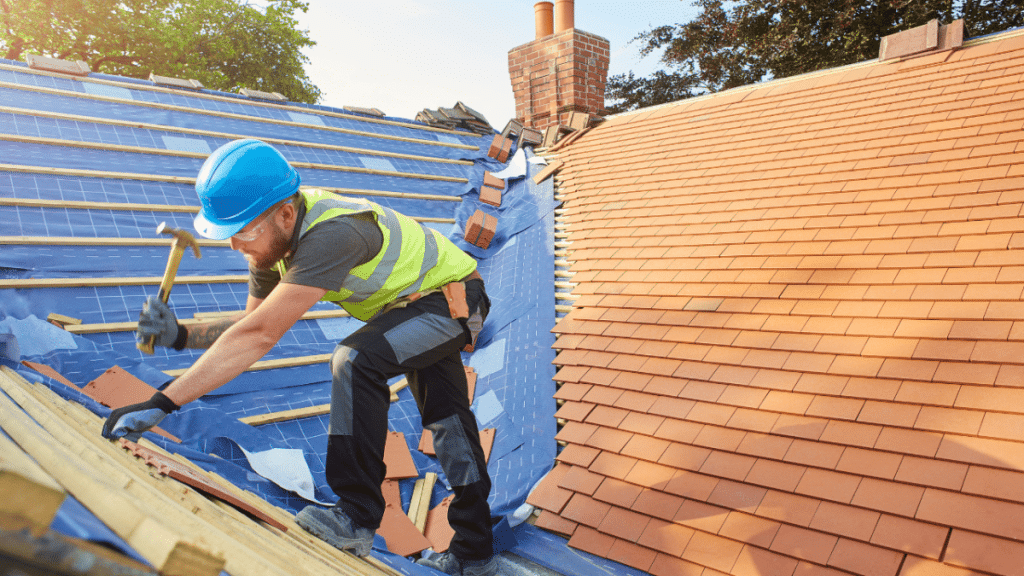Restoration of period properties in London is not an easy task. Such historical buildings form a great part of the city’s heritage, and restoring them in their traditional aesthetics together with modern functionality requires a delicate balance. To tackle such roofing complexity comes the roofers in London, who bring expert craftsmanship to the job.
Understanding Period Properties in London
The ages of London property include Georgian town houses, Victorian terraces, and even Edwardian homes. Each age will have a style, material, and construction. First of all, they should know the history and design so they can work on the roofing of those houses.
For example, pitched roofs in Georgian homes are slate whilst in Victorian ones; tiles of plain or elaborated may present a very developed ridge pattern. Such information shall give roofers at London some light as they seek to make their restorations relate to the originally character of a property.
Issues in Restoring Period Properties Roofing
The restorations on period roofs are indeed rough:
Aging material
Many period properties have materials that date back decades and even centuries. Whether to repair or replace those materials-to maintain authenticity-is taken when roofing.
Matching Original Materials
Matching original materials is pretty difficult. Slate often needs to be reclaimed, and clay tiles have to be handmade in most cases to get the historical accuracy about the roof to be correct.
Structural Integrity
Such roofs, which had their structural frameworks, must have damaged to some extent over time. The roofers have to study and restore such frameworks without compromising the safety of such buildings as a whole.
Compliance with Legal Provisions
All major restoration works on period properties occur under conservation and heritage provisions. The London roofers must be aware of the needs of such provisions.
Steps Roofers in London Take for Restoration of Period Properties
1. Thorough Investigation and Planning
Restoration begins with a thorough survey of the roof. Roofers note the tiles, slates, lead work, chimneys, and gutters’ conditions. They would also point to structural problems which are hidden below the surface.
Following the assessment, there is creation of the restoration plan. This includes material sourcing, repair layout strategies and new replacements without contravening any local regulations.
2. Sourcing Authentic Materials
Authenticity is the most important aspect of any restoration work on period property. London roofers buy reclaimed materials from specialist suppliers including slate, clay tiles, and period-specific fixtures. At times, they commission custom pieces that replicate complex designs.
3. Quality craftsmanship
Restoring an old period roof needs technical knowledge, a blend of skilled craftsmanship, and a variety of techniques used by skilled roofers in London. They will handle traditional techniques such as hand-cutting slates, lime mortar pointing, and decorative lead work to be able to integrate the restored roof without affecting the original design.
4. Traditions and Modern Solutions Balance
It also, while keeping its old looks sometimes introduces the modern roofing solution so that their lifespan can increase with more efficiency. For example, it installs subtlety modern membranes or insulations, advanced to give high-class waterproofing without compromising their aesthetics.
5. Conservational Guidelines
Usually, such properties make it onto a list or are included in a conservation area, which means that they are bound to very specific standards that they must meet in order to be restored. Roofing professionals operating in London communicate with conservation officers to ensure that the methods and materials that will be used don’t clash with any regulations that may make the history of the building be washed away.
Why Roofing Services from Professional Roofers in London?
A period roof is not a DIY. It has to be done by experts who know what old architecture and construction look like. Here’s why it has to be by experts:
Knowledge
London roofers have dealt with many period properties, so they know what works best in terms of restoration.
Resources
They know who supplies authentic materials that are of quality to match the property
Regulatory Compliance
Experts are cognizant of the conservation laws and ensure that the work done is up to the legal standards.
Long-term Outcome
Experts ensure that the roof not only appears realistic but also withstands the wear and tear over time.
Period Roof Restoration in Real Life in London
London roofers have transformed some of the city’s most historic period homes. They include Victorian homes in Kensington, Georgian terraces in Bloomsbury, and Edwardian mansions in Hampstead. Such examples demonstrate that they can work on any architectural style while keeping each property unique.
Tips for Property Owners
Some tips to ensure a successful roof restoration of your period property in London are as follows:
Hire Experts: Always hire roofers that have had experience with the restorations of period properties.
Ask for Portfolio: Request references of work done to judge their expertise
Budgeting: A restoration of period roofs is very expensive because it means involving the original materials and experts
Contact Conservation Officers: If your property has listed status, contact the conservation authorities as early as possible to understand requirements.
Restoring a period property roof in London is one of the most intricate procedures. It demands both expertise and craftsmanship in combination with a respect for heritage. Professional roofers in London bring all of these qualities together to ensure your historic property will be safe for generations to come. Whether it’s sourcing authentic materials, using traditional techniques, or just navigating the labyrinth of conservation guidelines, their dedication is what makes the architectural gems shine in the city.
By choosing skilled roofers for your period property restoration, you’re not just repairing a roof—you’re safeguarding a piece of London’s rich history.
